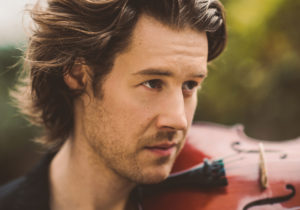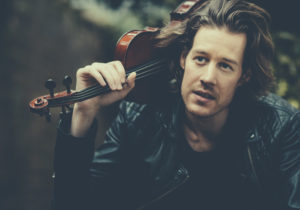Fifty Shades of Blue
Interview
Thomas Gould is no ordinary violinist: he’s a concerto soloist, orchestral leader, swing-band player and jazz improviser. This season he launches a new series featuring his jazz heroes
Have you always improvised?
It all began at University College School, where this brilliant music teacher, Fergus Read, used to seek out the musical students so that he could corrupt them with jazz! He taught me jazz piano and drums. When I got to the Royal Academy of Music I really knuckled down: there’s no substitute for the hard work needed to play the violin at the level required in the classical profession. It never ceases to amaze me what an astonishing and demanding instrument it is.
How did you make the leap?
When I was in my mid-twenties Gwilym Simcock asked me to play on his Instrumation album and Trish Clowes on and in the night-time she is there. Then, in 2011, myself and Jean-Marie Fagon formed the swing band Man Overboard Quintet. It was great fun, and got me really comfortable playing without music. After four years and two albums with the group, I decided to move on to new challenges…
Jazz composers?
Trading solos with Tim Garland or Gwilym Simcock is a whiteknuckle ride: they are world-class improvisers. They’re likely to throw you a million notes, and you have to respond. In this series, all of us are presenting ourselves with fresh challenges because the programmes combine classical and jazz repertoire.
What can we expect from the Gould Standard?
It’s giving me the opportunity to bring together colleagues, friends and musicians I admire to create new and interesting combinations. First up is Gwilym Simcock (with whom I have performed on several occasions at Kings Place) and Bernhard Schimpelsberger, an incredibly versatile jazz and world music percussionist. Tim Garland needs no introduction; he is wellknown to audiences as a vastly accomplished saxophonist and composer. The excellent John Turville (piano) and virtuoso Yuri Goloubev (bass) are joining us for this loosely Tango-themed programme. This series is about exploring the spaces between our musical worlds – hopefully that’s where the alchemy will take place…
How does jazz performance feed into your playing?
Because I’m often amplified I become much more aware of microscopic differences in timbre and articulation. There’s so much subtlety in jazz, so much creative space. It’s like when you go into a paint shop and ask for ‘light blue’ and then realise there are 50 shades of light blue! One violinist who I greatly admire is Adam Bałdych. A lot of violin technique is geared towards making a beautiful sound but Adam isn’t afraid to growl and whisper and let the silences speak. The fragility and subtlety in his playing is a great example of the breadth of techniques that jazz employs.
Any further plans?
I hope to have some kind of ‘violin summit’, and to invite the German-Estonian jazz pianist Kristjan Randalu. He provided me with a life-changing experience when I was at the Academy; he asked if anyone wanted to improvise, I was the only one who put up my hand. I’ve still got the recording of that concert…


